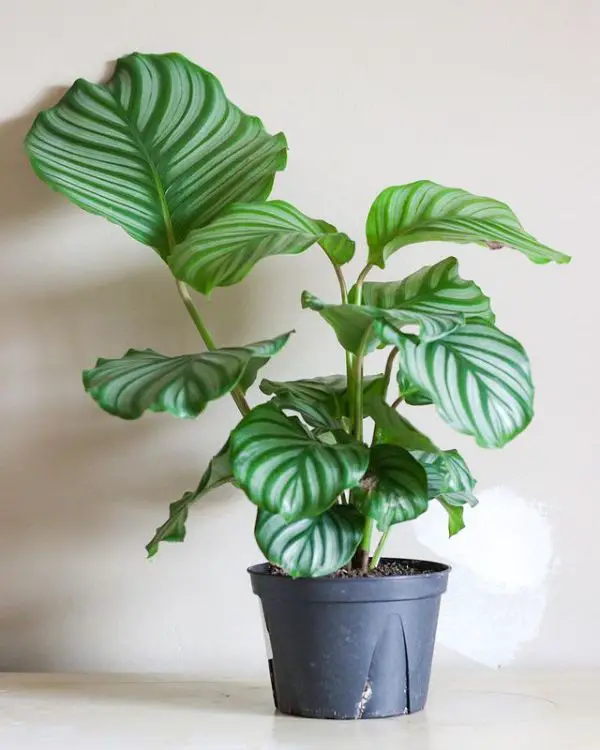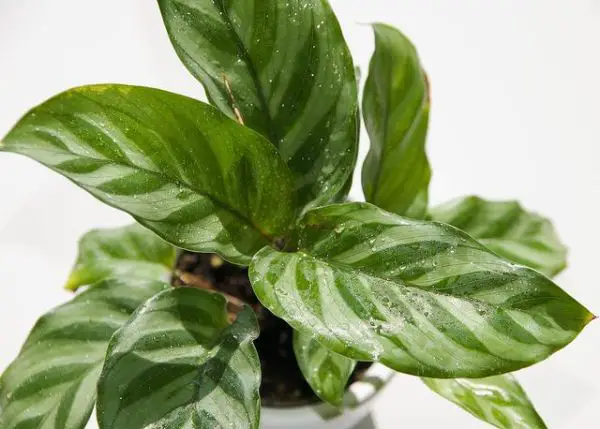If you’re like many people, you may be wondering how to care for Calathea. This beautiful plant is a favorite of many, but it can be tricky to keep alive if you don’t know what you’re doing.
In this guide, we will teach you everything you need to know about how to take care of Calathea plants. We’ll cover everything from watering and fertilizing to pests and diseases. With our help, you’ll be able to keep your Calathea looking beautiful for years to come!

How to Care for Calathea
Here are a few things you’ll need to know about how to care for Calathea:
1. Watering
Watering is one of the essential aspects of Calathea care. These plants like to be kept moist but not soggy. Allow the top inch or two of soil to dry before watering again. If you’re unsure how often to water, stick your finger into the soil. If it feels dry, it’s time to water it.
2. Fertilizing
Fertilizing is another important part of Calathea care. These plants need to be fertilized every two weeks during the growing season (spring and summer). Use a balanced fertilizer that is low in nitrogen. Too much nitrogen will cause the leaves to turn yellow.
3. Lighting
Lighting is important for Calathea care. These plants prefer bright, indirect light. They will do well in a spot that gets some morning sun but is out of the direct afternoon sun. If you don’t have a spot like this in your home, you can also grow Calatheas under fluorescent lights. Just be sure to keep them about 12 inches away from the bulbs.
4. Temperature
Temperature and humidity are also important for Calathea care. These plants prefer warm temperatures (70-85 degrees Fahrenheit) and high humidity. If your home is not naturally humid, you can increase the humidity around your Calatheas by grouping them together or by placing them on a pebble tray.
5. Humidity
Humidity is important for Calathea care. These plants prefer warm temperatures (70-85 degrees Fahrenheit) and high humidity. If your home is not naturally humid, you can increase the humidity around your Calatheas by grouping them together or by placing them on a pebble tray.
6. Pruning
is also important for Calathea care. These plants should be pruned every few months to remove any dead or dying leaves. This will help encourage new growth and keep your plant looking its best.
7. Pests and Diseases
Pests and Diseases are common problems with Calatheas. These plants are especially susceptible to mealybugs and spider mites. Watch for these pests and treat them immediately if you see them. Diseases such as fungal leaf spot and root rot can also be a problem. Be sure to keep an eye out for any signs of disease and act quickly if you see anything suspicious.
With our help, you should be able to keep your Calathea plant healthy and happy for many years. Just be sure to follow our advice on watering, fertilizing, and pest control. If you do that, you’ll be well on your way to being a Calathea care expert! Thanks for reading and good luck!
How often should I water my Calathea?
Water your Calathea when the top inch or two of soil feels dry. You can also stick your finger into the soil to check if it’s time to water. Remember that these plants like to be kept moist, but not soggy. Overwatering can lead to root rot, so be sure not to water too often. Learn more about how often to water Calathea at https://dignursery.com/how-often-to-water-calathea/

What kind of fertilizer should use on Calathea?
Use a balanced fertilizer that is low in nitrogen. Too much nitrogen will cause the leaves to turn yellow. Fertilize your Calathea every two weeks during the growing season (spring and summer).
What pests and diseases should be on the lookout for?
Pests such as mealybugs and spider mites can be a problem for Calatheas. Diseases such as fungal leaf spots and root rot can also occur. Be sure to keep an eye out for any signs of pests or disease and act quickly if you see anything suspicious. Thanks for reading!
We hope you enjoyed this guide on how to care for Calathea. Remember, these plants need to be kept moist but not soggy. Water when the top inch or two of soil feels dry and fertilize every two weeks during the growing season. Be on the lookout for pests and diseases and act quickly if you see any signs of them.


